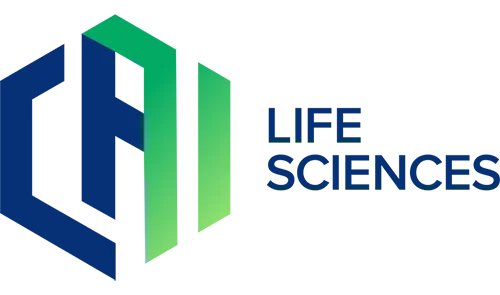Transitioning from technology transfer (TT) to routine commercial production poses significant challenges for biopharmaceutical companies. Ensuring a seamless handover from the TT Team to the Receiving Unit (RU) requires meticulous coordination across multiple functions to mitigate risks and incorporate lessons learned. This blog explores the critical roles and activities involved in the Handover stage to ensure the RU is prepared for independent, successful commercial operations.
An Overview of the Handover Stage
The Handover stage in the technology transfer (TT) process marks the critical transition from the TT Team to the Receiving Unit (RU) post-transfer operations team. This stage encompasses a variety of activities across multiple functions to ensure that the RU is ready for routine commercial production or further product development. A key focus during this stage is the continuous review and update of risk assessment and mitigation strategies to ensure a smooth transition, which will vary depending on the specific type of TT and the established endpoints in the TT charter.
Key Roles and Activities
Business Function Activities
Once the Process Performance Qualification (PPQ) is completed, the Business function conducts a comprehensive review of the business contract with the RU. This review ensures that the RU can meet the estimated commercial volumes and prepares a resource plan to address any changes needed to support the product. The Business function’s role is crucial in aligning the commercial production capabilities with market demand, ensuring a smooth transition from the TT phase to full-scale production.
Role of the Technology Transfer Project Manager (TT PM)
The TT PM is responsible for ensuring that all elements of the TT charter have been addressed. During the Handover stage, the TT PM documents lessons learned and may assist the RU in incorporating key improvements before the final transfer. The TT PM’s duties also include formally closing out the project and verifying that all project requirements have been met, ensuring that the RU is well-prepared for ongoing operations. Effective leadership and thorough documentation by the TT PM are essential for a successful handover.
Process Function Responsibilities
The Process function of the TT Team continues to support the product post-qualification during routine production. This team plays a critical role in knowledge transfer (KT) during the Handover stage and may lead in executing process improvements identified during the PPQ, including managing associated change controls. Their involvement ensures that the production process remains efficient, and any improvements are seamlessly integrated into routine operations.
Analytical Function Activities
The Analytical function focuses on identifying and documenting lessons learned from analytical activities. It verifies the new product is included in the RU’s stability-testing program and oversees the execution of the stability protocol. Additionally, the Analytical team investigates any out-of-specification events and deviations arising from stability testing, providing critical insights that help maintain product quality and compliance with regulatory standards.
Engineering Function Contributions
During the Handover stage, the Engineering function reviews lessons learned related to equipment operation during qualification. Engineering may identify necessary process improvements, equipment upgrades, or replacements for the new process. These changes are evaluated against site change control and filing requirements for impact before being implemented ahead of commercial start, ensuring that the production equipment is optimized for efficiency and reliability.
Manufacturing Function’s Role
The Manufacturing function is vital for providing feedback on lessons learned and identifying potential improvement areas following qualification. This feedback includes training, equipment operation, and the manufacturing batch record. Manufacturing qualifies all personnel verifying adequate training and preparation to support commercial demand, and they may take ownership of Corrective and Preventive Actions (CAPAs) resulting from qualification. The RU Manufacturing function verifies readiness for commercial start, covering all operational aspects from cleaning to batch operations.
Regulatory Function Activities
The Regulatory function communicates the expected timing for regulatory approval and promptly informs the TT Team of any potential delays. Regulatory also supports the product launch by reviewing promotional materials and medical information for consistency with product labeling. Ongoing regulatory communications are essential for ensuring compliance and facilitating a smooth transition to commercial production. The Regulatory team may also explore opportunities for post-approval efficiencies and cost reductions.
Quality Function Responsibilities
The Quality function at the Market Authorization Holder (MAH) establishes the quality management review process, involving both the RU and the Sending Unit (SU). Quality agreements may be updated to address all aspects of commercial manufacture. The Quality team completes the closure of all TT documentation, including change controls, validation reports, deviations, and CAPAs. They also identify lessons learned from the Execution stage to incorporate into future training, enhancing process quality and compliance.
Sourcing/Supply Chain Function Activities
The Sourcing/Supply Chain function continues production planning and material sourcing activities, integrating improvements identified during the Execution stage. Lessons learned are implemented before handover to the RU post-transfer operations team. This includes updating equipment and personnel standards, procurement lead times, quantities, and resource planning. The supply and procurement plans are tailored to meet commercial requirements and release expectations, ensuring that the RU is well-equipped to handle the commercial production demands.
The Road to Successful Technology Transfer
The Handover stage is a critical phase in the technology transfer process, involving detailed coordination across various functions to ensure a seamless transition to commercial production. Each function—Business, TT PM, Process, Analytical, Engineering, Manufacturing, Regulatory, Quality, and Sourcing/Supply Chain—plays a unique and essential role in this stage. By documenting lessons learned, addressing risks, and confirming all requirements are met, the TT Team ensures that the RU is fully prepared for independent commercial operations. This meticulous approach not only facilitates a smooth handover but also sets the foundation for sustained product quality and commercial success.

